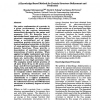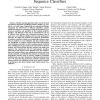145 search results - page 16 / 29 » Predicting DNA-binding sites of proteins from amino acid seq... |
JCB
2007
13 years 7 months ago
2007
In our recent work, a new approach to establish sequence relatedness, by walking through the protein sequence space, was introduced. The sequence space is built from 20 amino acid...
NAR
2006
13 years 7 months ago
2006
Individual zinc finger (ZF) domains that recognize DNA triplets with high specificity and affinity can be used to create designer transcription factors and nucleases that are spec...
ISMB
1996
13 years 8 months ago
1996
The native conformation of a protein, in a given environment, is determined entirely by the various interatomic interactions dictated by the amino acid sequence (1-3). We describe...
BMCBI
2007
13 years 7 months ago
2007
Background: Backtranslation is the process of decoding a sequence of amino acids into the corresponding codons. All synthetic gene design systems include a backtranslation module....
BIBE
2007
IEEE
13 years 11 months ago
2007
IEEE
Machine learning approaches offer some of the most cost-effective approaches to building predictive models (e.g., classifiers) in a broad range of applications in computational bio...



